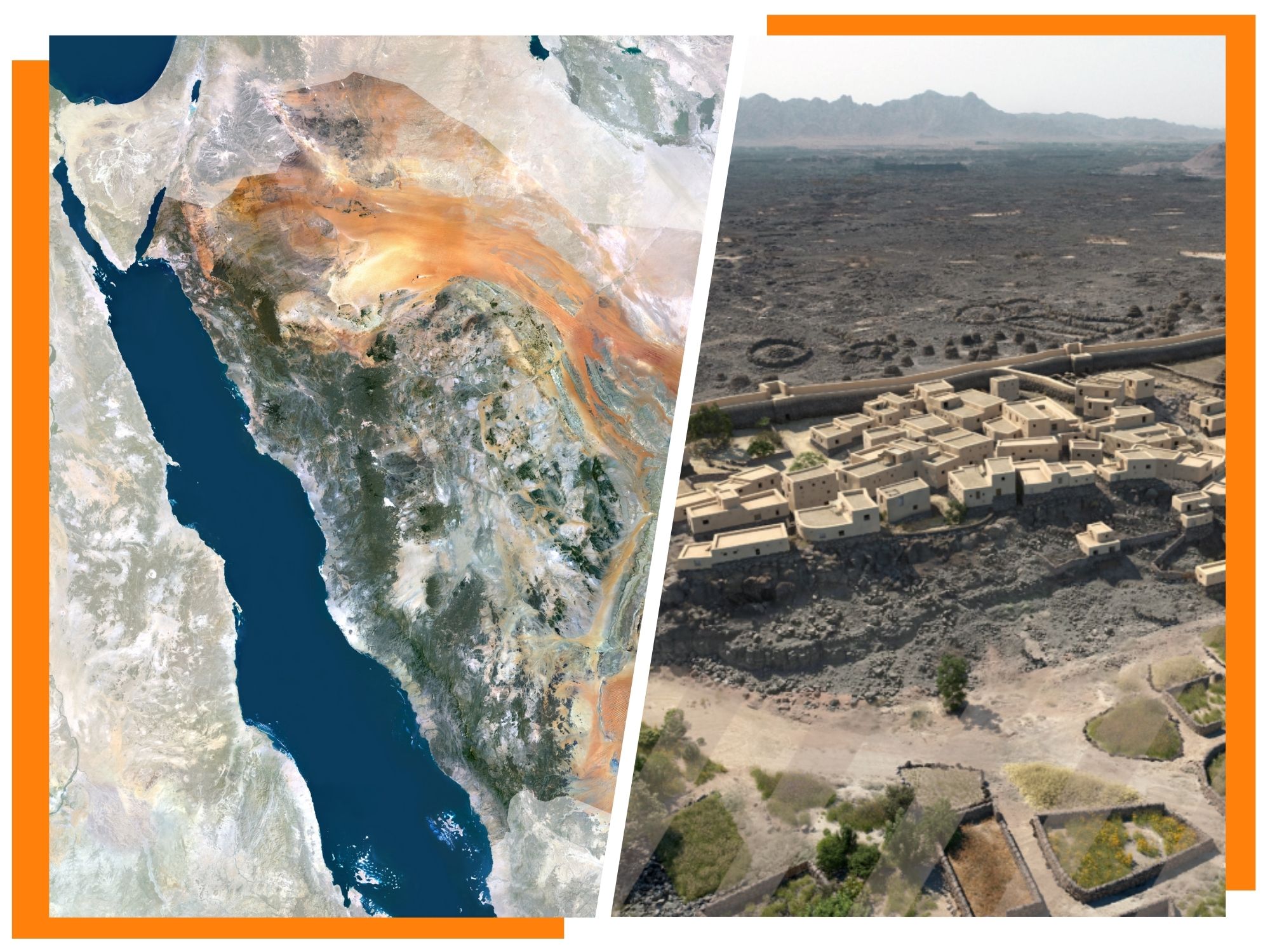
Until 20 years ago, little was known about the Bronze Age culture of the Hejaz, a mountainous region that abuts the Red Sea in western Saudi Arabia. Archaeological evidence was scant and the traces on the ground—largely megalithic monuments and rock art—pointed to an era and territory sparsely populated by nomadic pastoralists.
In the early 2000s, that picture began to change through a Saudi-German mission in the Tayma oasis that uncovered a fortified settlement with strong trade links across the Arabian Peninsula and with other Mesopotamian civilizations. Next, a Saudi-Austrian expedition in 2015 explored another urbanized oasis. Now, new excavations, some 120 miles southwest in the Khaybar Oasis, further the idea that the area saw an increase in urban living between 2,500 B.C.E. and the beginning of the second millennium B.C.E
The site, which researchers have named al-Natah, was a small town spread across 3.7 acres that was inhabited between roughly 2400 B.C.E. and 1300 B.C.E. Surrounded by a protective rampart, al-Natah included a residential area connected by small streets that once housed a population of 500, a necropolis, and a central area that researchers called “a decision-making zone.”
Map of the al-Natah site. Photo: courtesy Charloux et al.
The findings of what researchers have labelled an “exceptional Bronze Age fortified site” were published in PLOS One on October 30.
“This radical change in lifestyle, from a pastoral-nomadic way of life to more agro-pastoral subsistence… had a profound impact on socio-economic organization and complexity,” Guillaume Charloux, the lead author, wrote.
Towns like al-Natah offered indigenous peoples an urban alternative and came to exist within an interconnected network of oases. As evidenced by the nine-mile-long wall, the town needed protection from nomadic raiders. It likely grew prosperous through trade, and archaeologists found large quantities of pottery and grinding stones for tool preparation as well as the remains of around 50 earthen dwellings. It was abandoned sometime in the middle of the second millennium, for reasons that remain unclear.
A tower in the southern rampart of al-Natah site. Photo: courtesy Charloux et al.
While the Hejaz is exhibiting more development than was previously believed, al-Natah experienced urbanization at a much slower pace than at contemporaneous sites across Mesopotamia, Egypt, and the eastern Mediterranean. Babylon, for one, was founded in the late 1890s B.C.E. and Memphis, Egypt’s first capital, had a population of more than 40,000 by the early 2000s B.C.E.
Researchers described it as a period of “low urbanization” in the northwestern Arabian desert, a phase between nomadic pastoralism and the development of complex urban settlements.
“More excavations in Khaybar and other Bronze Age settlements in the region are needed to assess the level of socio-economic complexity during this period,” researchers wrote.
3D virtual reconstruction of the Bronze Age site of al-Natah. Photo: Courtesy Charloux et al